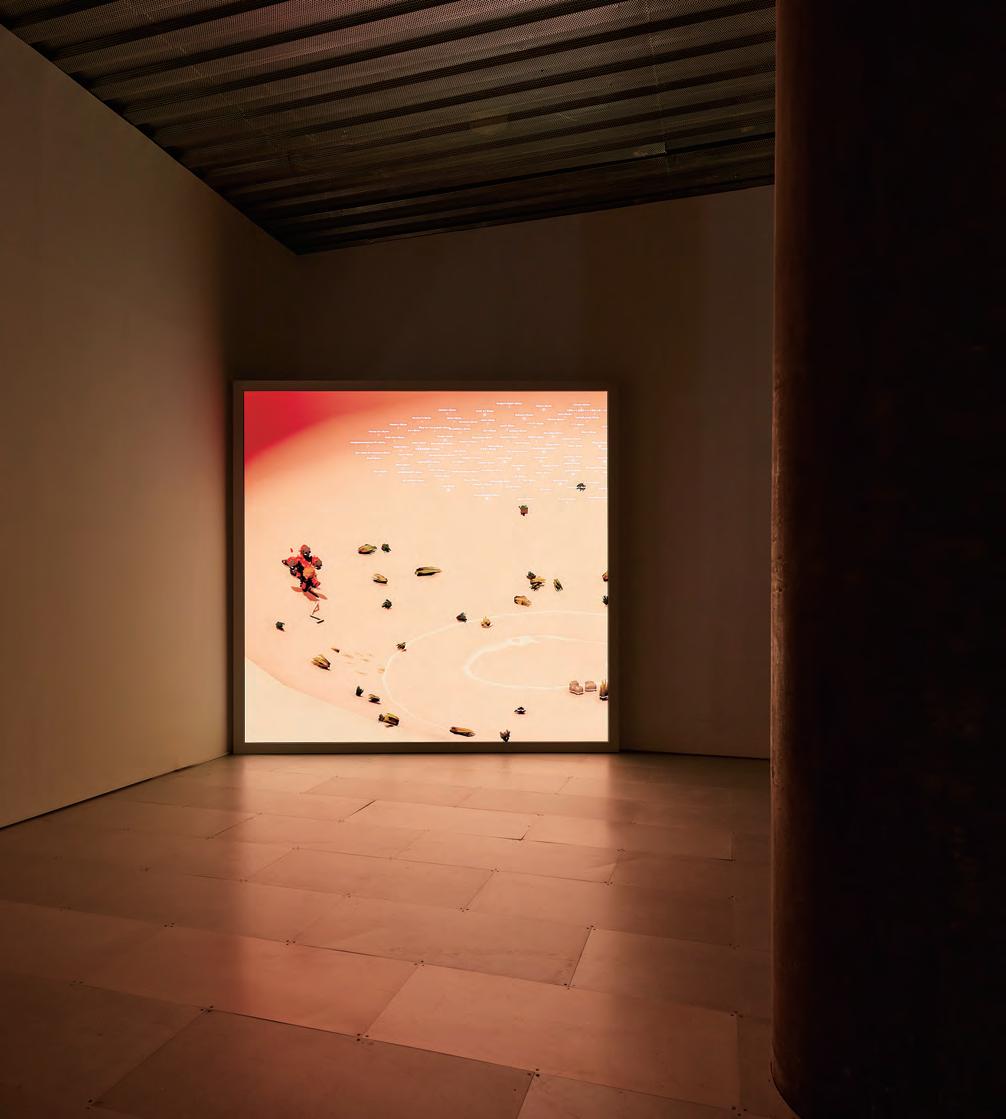
3 minute read
GALLERY
Ian Cheng, ‘Emissary Forks At Perfection (still)’, 2015-2016 Live Simulation and Story, Infinite Duration, Sound © Ian Cheng, Courtesy of the Artist, Gladstone Gallery, Pilar Corrias, London, and Standard (Oslo), Oslo
Ian Cheng: Worlding
Advertisement
Known for his virtual ecosystems created with AI technology and video game engines, American artist Ian Cheng’s first solo exhibition in Asia is currently being held at LEEUM of Art. In the exhibition <Ian Cheng: Worlding>, the artist creates virtual realities, constructed through his own logic and algorithms, where people interact in an immersive digital world.
editor HELENA

Ian Cheng, ‘Emissary in the Squat of Gods (still)’, 2015 Live Simulation and Story, Infinite Duration, Sound © Ian Cheng, Courtesy of the Artist, Gladstone Gallery, Pilar Corrias, London, and Standard (Oslo), Oslo
Ian Cheng’s live simulations teeming with AI-based characters and wildlife make a complex theoretical inquiry into the nature of human consciousness. His works have been exhibited internationally such as at MoMA PS1 in New York and the Serpentine Galleries in London. The artist was also featured in the Venice Biennale 2019 and the Liverpool Biennial 2016. Asia’s first comprehensive survey of Ian Cheng’s simulated worlds, this exhibition serves as a fascinating portal into his virtual ecosystems where he merges cuttingedge technology with cognitive psychology to visualize in real-time certain mechanisms fueling human mind and behavior. Based on the artist’s unique concept of world-building, the five major works on display explore his philosophy on the evolution of human consciousness. Ian Cheng’s iconic <Emissaries> trilogy (2015~2017), which has earned the artist international acclaim, is a series of “live simulation” works explaining how AI creatures interact with their surrounding environments within an ever-changing virtual ecosystem. Populated by a cast of characters and wildlife who interact, intervene, and recombine in open-ended narratives, Cheng’s live simulations evolve endlessly based on his imagination of human’s cognitive evolution. Cheng described the <Emissaries> trilogy as “video games that play themselves over and over again.” The emissaries can either succeed or fail in their given mission. Like a

Installation View, Ian Cheng: Worlding at Leeum Museum of Art, Seoul, 2022. © Ian Cheng, Courtesy of the Artist and Leeum Museum of Art

Ian Cheng, ‘Life After BOB: The Chalice Study (still)’, 2021 Live Animation, Color, Sound, 48min. © Ian Cheng, Courtesy of the Artist, Gladstone Gallery, Pilar Corrias, London Ian Cheng’s Life After BOB: The Chalice Study is co-commissioned by The Shed (New York), Luma Foundation, and Light Art Space (Berlin). The Interactive Mobile Application is Supported by Leeum, Samsung Museum of Art (Seoul)
video game, when an episode ends, another episode starts all over again, but with a whole new narrative. Cheng further explores the inner workings of human consciousness through AI and video game technology in <BOB (Bag of Beliefs)>(2018-2019). BOB is a serpent-like artificial lifeform made up of multiple “demon” heads with different motivations and beliefs that compete for the control of a single body. The brain of BOB is split into multiple subpersonalities. Viewers can influence BOB’s life and behaviors by giving BOB an additional personality or belief through an interactive mobile app called “BOB Shrine.” The last piece featured in the exhibition, <Life After BOB: The Chalice Study)>(2021) is a 48-minute animated film, co-commissioned by LEEUM and other art institutions including The Shed in New York, LUMA Foundation and Light Art Space in Berlin. It offers a revolutionary interactive way to explore the world of the animation called “World Watching”. Audience can use their smartphone as a personal remote to pause any scene and dive deeper into the film to investigate its characters and environments. An episodic anime series built in the Unity game engine and presented live in real-time, <Life After BOB> imagines a future world where humans and AI entities live together. The exhibition runs through July 3, 2022. N





